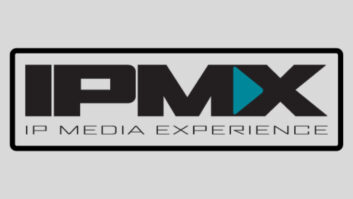
By Graham Mills, chairman, DVB Commercial Module
At DVB’s one-day workshop in May, around 100 people came together from around the world to share the latest thinking on how best to distribute broadcast and online media content to consumers in the future. Has the MPEG transport stream (TS), at the heart of digital TV distribution including Blu-Ray, Apple HLS and virtually all broadcast TV services, finally had its day? Can some of the IP-based solutions, now being widely adopted for online delivery, gain traction in traditional broadcast networks too?
In the best traditions of DVB, the participants first reviewed the market and its evolving requirements. Content owners and broadcasters are delivering their programme content to ever more devices, from internet-connected Ultra High Definition (UHD) TVs through games consoles and personal computers as well as to tablets and smartphones with their increasingly capable displays and fast mobile network connections.
Some of the market trends that can guide us towards an optimal set of technical solutions include:
• Consumers watching much more TV and video content on tablets and smartphones, with broadcasters looking to make their linear and on-demand services available to all devices in cost-effective ways.
• Repurposing broadcast content, to make it available on various browsers and apps across multiple devices has become highly complex and it’s a significant additional cost to produce multiple feeds.
• Unlike satellite, terrestrial and cable networks offering fixed, stable distribution costs regardless of the number of viewers, the costs of content distribution networks (CDNs) over mobile and fixed broadband networks are increasing rapidly as user numbers and viewed minutes rise.
• Personalised content and targeted advertising are commercially important and there’s a real need to be able to knit together varied audio and video components into underlying broadcast or broadband streams.
Advocates of the continued use of TS-based broadcasting highlighted its many strengths. It’s been at the heart of DVB and other digital TV specifications for over 20 years. It’s an efficient way to deliver linear content, enabling viewers to access a stream and start viewing at any time. It has low and predictable latency, with robust ways to detect and correct errors, especially in one-way networks. The large installed base of TS-based receivers is a major barrier to change.
Those promoting the adoption of an IP-based transport layer for broadcast services point to the need for an integrated approach. Mobile devices, connected via all-IP mobile data networks and Wi-Fi, are becoming ubiquitous. With larger, higher-resolution screens, consumers are spending an increasing proportion of their daily viewing time on those personal devices.
Many within the mobile industry are advocating the wider use of LTE broadcast standards, also known as eMBMS, enabling a content stream to be multicast to many users simultaneously, in place of a unicast service requiring dedicated network capacity for each additional user.
The USA is adopting an all-IP approach in its new ATSC 3.0 broadcast TV standard. In Japan, NHK has chosen the MMT framework for new UHD services. Others are also advocating the ISOBMFF file format, an IP-based technology suitable for both streaming and file download.
Some conclusions can be drawn from the workshop’s wide-ranging, high quality presentations and panel sessions. Firstly, the MPEG transport stream will continue to offer an efficient solution to the needs of many broadcasters for years to come. With such a large installed base of receivers, any change to core broadcast networks is likely to be an evolutionary journey, not a step change.
Secondly, transport technologies based on IP can now offer equally efficient delivery of linear TV and video content, with a range of features especially well suited to the needs of users with mobile and broadband-connected devices. For new entrants to the market, IP-based technology over mobile and fixed broadband networks can offer a compelling solution to their distribution needs, despite many legacy receivers remaining unconnected to the IP world. However, some challenges are still to be resolved if IP networks are to deliver the consistently high picture quality that consumers can expect from broadcast networks.
What does this all mean for DVB? The continuing strengths and support for TS-based broadcasting will require DVB to maintain and enhance its existing transport-layer specifications for many years to come. However, the market need for a more integrated approach to content distribution to a much wider range of devices will require some radical new thinking.
How can traditional broadcast networks evolve to support personal devices as well as larger TV screens? Can the mobile and broadcast industries work together, following the initial adoption of broadcast technology in some mobile networks, to define new specifications that incorporate the best of DVB’s, 3GPP’s, ATSC’s and others’ know-how into a converged global standard for terrestrial broadcast and mobile content distribution?
DVB is ready to play its part in setting the standards needed for the future, using the best of the IP and TS technologies. This would need to be delivered in a collaborative way, working with the mobile, broadband and broadcast industries.







